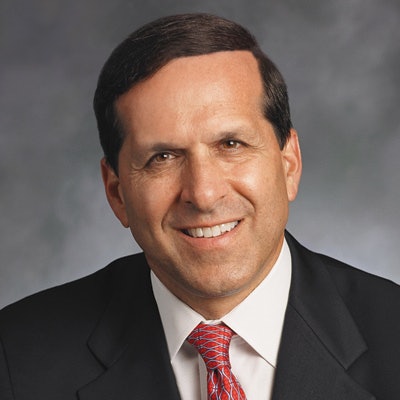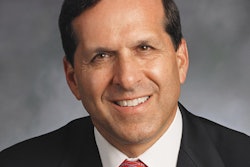
Dr. Roger P. Levin brings you the most thought-provoking topics from the Dental Business Study Clubs, an organization focused on the business of successful dentistry. Each month, Dr. Levin will explore an aspect of the business of dentistry in detail.
Although this article was really written for the dental team, it should be read first by the dentist.
Dentists have always wanted to know more about how to manage their teams. I've often shared that the goal is to build a highly cohesive group of team members that operates a positive and productive practice. This is the ideal scenario -- and then there is reality.
In reality, dental teams are made up of people who are trying to do a really good job but often have obstacles along the way. Unfortunately, one of those obstacles can be the dentist.
I realize that there may a collective eye roll from all the dentists reading this, but I feel very comfortable in saying this: Managing the boss (and the boss is usually the dentist) can be a challenge.
Managing up
 Roger P. Levin, DDS, is the executive founder of the Dental Business Study Clubs.
Roger P. Levin, DDS, is the executive founder of the Dental Business Study Clubs.The term "managing up" is a business term that has been around for years. It refers to how employees can learn to manage their bosses or people who have higher ranks than they do in a business.
At the dental practice, the ultimate final boss is the dentist. Even if team members report to an office manager, they still have to satisfy and communicate with the dentist for the practice to function.
Most dental team members have no experience in managing up. However, when they learn how to, amazing things can happen. I have seen practices transformed from chaotic, stressful environments into highly efficient organizations with the confidence to continually increase practice production.
So how does a team member manage the dentist? It all begins by understanding that dentists are not perfect human beings. Every dentist has strengths and weaknesses. Some dentists are very outgoing people, and others are introverts. Some are natural leaders, while some would rather do just about anything else but lead. Some dentists like to teach and mentor, and others like to be left alone. Some communicate well, and some do not. You get the idea.
It would be wonderful if the dentist could hand every team member a list of his or her strengths and weaknesses. However, even if they did, odds are that it wouldn't be completely objective. As I like to joke in my seminars, when we look in the mirror, we all see perfect specimens of humanity. In other words, we rarely see ourselves as we really are.
The best way to find out what your strengths and weaknesses are is to ask the people closest to you. Your spouse, family, and friends have the best perspective.
The second-best way is to read Now, Discover Your Strengths by Marcus Buckingham and Donald Clifton. By working through this book, you will identify your areas of strengths, and you can then share them with the team.
The third way is to sit down and think about what you like and what you don't like to do in the practice. Usually, the things that you enjoy are your strengths, and the things that you don't enjoy are your weaknesses.
The ultimate way to figure out the dentist's strengths and weaknesses is for the team to observe and identify them. Team members have an incredible sense of where their doctors are strong, where they are weak, and where they can improve.
Consider the following strategies for managing up in your practice:
Focus on supporting the dentist's strengths
For example, one practice we observed had a dentist who was extremely gregarious. Patients appreciated and loved him. Unfortunately, a schedule template had previously been established that left the dentist almost no time to talk with patients. Hygiene checks were five minutes or less, new patients got eight minutes or less with the dentist, and case presentations lasted 10 minutes maximum. Within six months, practice production was down 9% and the dentist was miserable. He was running harder and doing less.
Understanding that practices should always play up strengths, we put more time back in the schedule for the doctor to spend with hygiene patients, new patients, and case presentations. The dentist was incredible when it came to communication and building relationships, and it was best to capitalize on this. Within 30 days, the average level of case presentation had increased by 27%. And, best of all, the dentist reported being significantly happier and looking forward to coming to work each day.
Support the dentist's weaknesses
When they are properly trained (either formally or by designing their own methodologies), most dental teams have the ability to compensate for the dentist's weakness. Disorganized dentists need teams that can organize daily operations. Introverted dentists need staff members who are outgoing and energetic to create high levels of patient satisfaction. Dentists who work slowly need teams that can quickly execute things around them. This is managing up in its purest sense.
Continually evaluate the doctor and the practice's strengths and weaknesses
Strengths and weaknesses may come and go over time and must be addressed. For example, it may become difficult for a doctor to juggle both administrative and clinical work when patient volume spikes. If there is no one on the team to handle administrative tasks, they simply won't get done. This will result in practice chaos and breakdown. The easiest solution is for a team member to step up and ensure that whatever is needed on the administrative side gets done. Other solutions would include adding technology that handles the task or outsourcing it to another firm as in the case of payroll, accounting, and some insurance management.
Summary
Practice management literature is full of strategies on how dentists can manage their teams, but there is very little information about how teams can manage their dentists (despite it being an essential aspect of building a high-level practice). Practices that have production in the top 10% typically have teams that work very independently, without direction from the dentist or office manager.
I encourage teams to use the strategies listed above to "manage up" to help them to maintain a highly efficient, stress-free practice.
Roger P. Levin, DDS, is the executive founder of the Dental Business Study Clubs. To contact Dr. Levin, or to join the 40,000 dental professionals who receive his Practice Production Tip of the Day, visitwww.levingroup.com or email [email protected].
The comments and observations expressed herein do not necessarily reflect the opinions of DrBicuspid.com, nor should they be construed as an endorsement or admonishment of any particular idea, vendor, or organization.



















